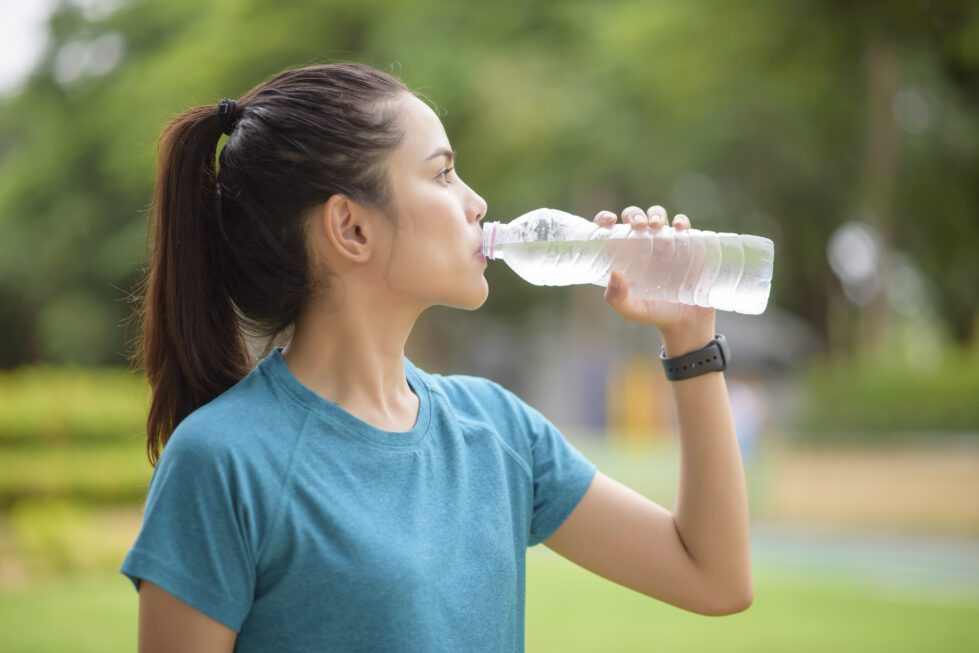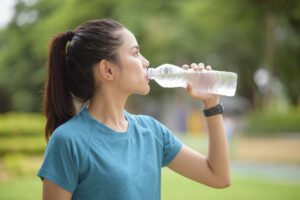With temperatures expected to remain near or above 90 degrees over the next few weeks, keeping yourself cool is critical, especially if you have to be outside for any length of time. Whether you work outdoors or have the need to be outside for more than an hour or so, these tips can help you reduce your risk of heat stroke and other heat related illnesses.
The American Red Cross states that an extreme heat event is a “series of hot days, much hotter than average, for a particular time and place.” Extreme heat kills more people than any other weather event, the Red Cross advises. The first step in helping you stay safe in the heat is to stay hydrated.
“An average person needs to drink about three-quarters of a gallon of water daily, although individual needs vary,” the Red Cross says. “If your urine is a dark yellow color, you may not be getting enough water. You should also avoid sugary, caffeinated or alcoholic drinks if you will be in the heat.”
If you are sweating, consider eating snacks or drinking sports drinks to replenish the salt and minerals you lose during the perspiration process. It is also important to talk to your doctor about any medications you are taking that may interact negatively with extreme heat.
Although fans can move air when it is extremely hot, they may not prevent heat-related illness, especially in those who are unhealthy or elderly. If your home does not have air conditioning, consider finding a location that does if even for an hour or two, such as a local library or café. Take a cool shower or bath as well to cool your body temperature. When heat is expected to last several days, some municipalities offer cooling stations designed for those who do not have air conditioning at home. Wear lightweight, loose clothing as well to keep your body temperature down.
Another tip is to be aware of the symptoms of a heat-related illness. Heat cramps are muscle spasms caused by losing large amounts of salt and water. Symptoms include muscle pain or spasms as well as heavy sweating. Heat cramps can be treated with water and sport drinks as well as moving to a cooler location. If the cramps last more than an hour or if the person impacted has a heart condition, seek medical attention.
Heat exhaustion can be a life-threatening illness. Symptoms include heavy sweating, cold, pale and clammy skin, a fast, weak pulse, nausea, vomiting, muscle cramps, tiredness or weakness, dizziness, headache and loss of consciousness. Treatment should be immediate and includes moving the person to a cool place, loosening their clothing and having them sip water slowly. Cool the body with wet cloths, misting, fanning or a cool bath. If they are experiencing vomiting, confusion or if symptoms last more than an hour despite cooling attempts, seek immediate medical attention.
Heat stroke requires emergency treatment as quickly as possible. Symptoms include a body temperature of 104 degrees or higher, hot, red, dry or damp skin, a fast, strong pulse, headache and dizziness. There may also be loss of consciousness, nausea and confusion. The symptoms may be confused with heat exhaustion, but the results can be far more deadly. Call 911 immediately if you suspect someone is having heat stroke. Move them to a cool location and cool the body with fans, mist, wet cloths or a cool bath. Do not give them anything to drink.
By following these tips and being aware of heat-related illness, you will be able to manage excessive heat and not only keep yourself safe, but friends and family as well.
Share this Post




